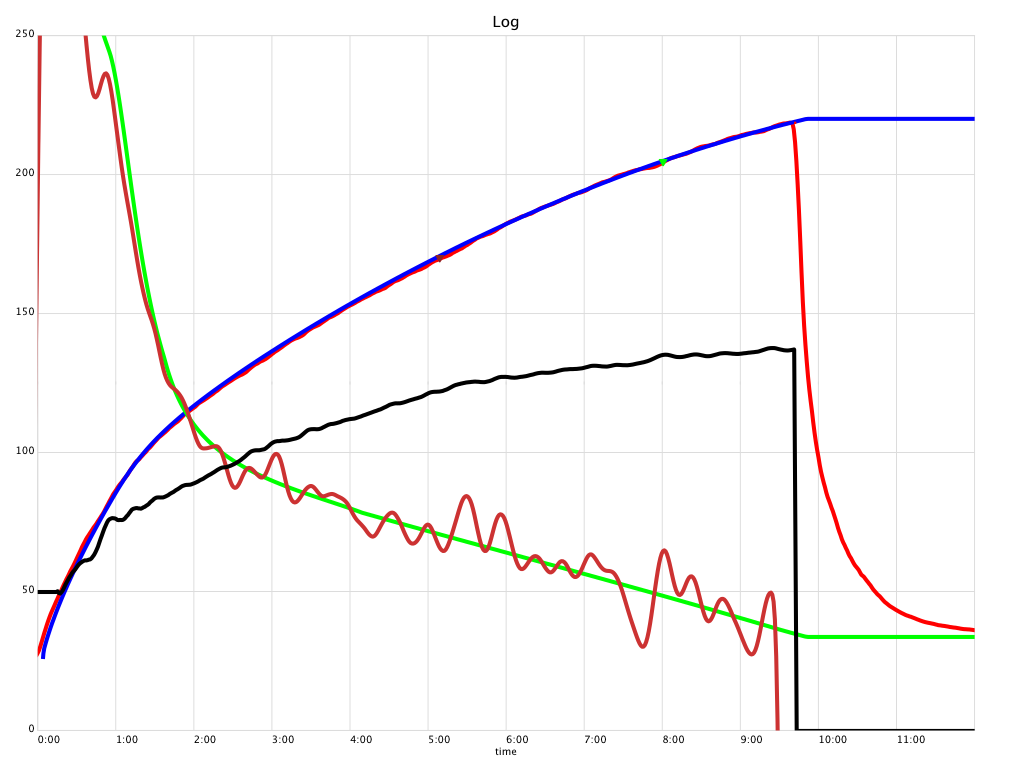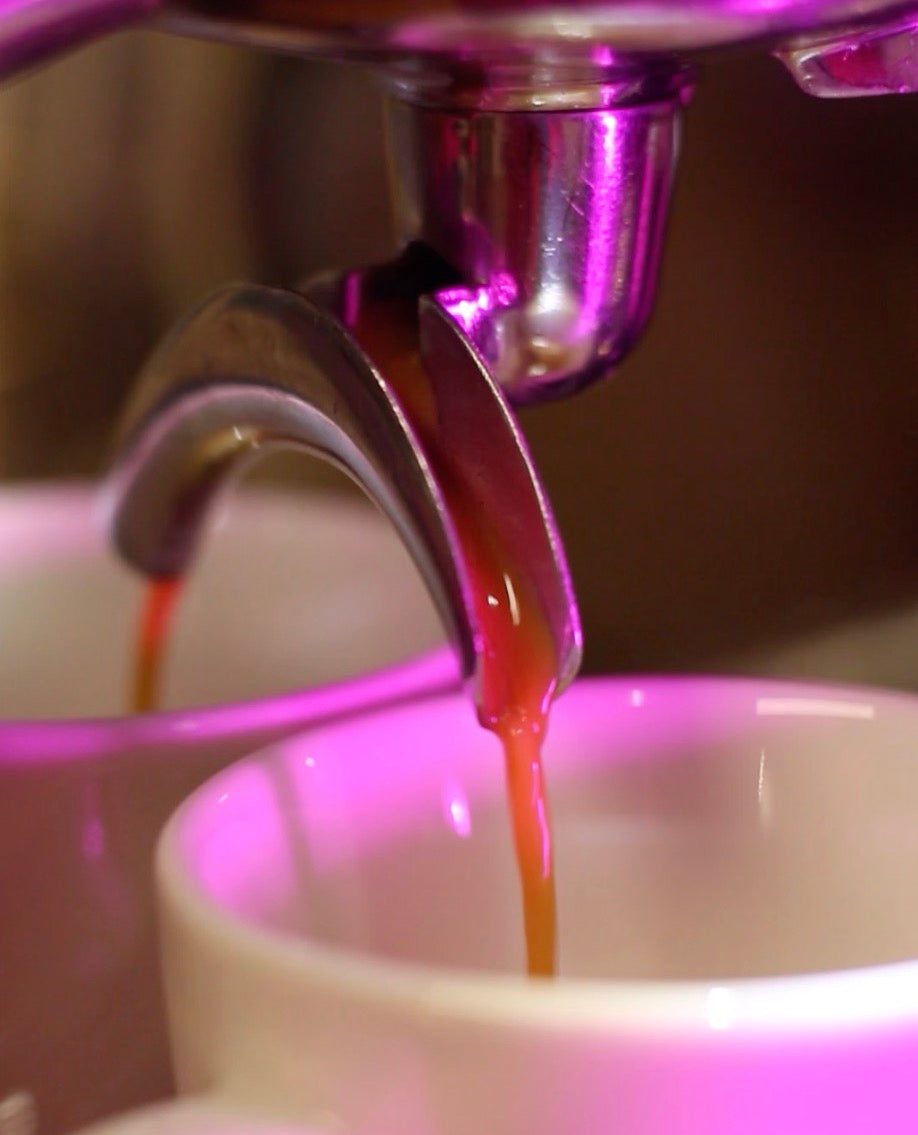Ethiopia Sidamo Lacto-Mango
Coffee Information
When I was at 3841, we experimented with subjecting green coffee to a fermentation environment. The result was the central theme of my first two presentations at the National Barista Championship. The central idea is to modulate the flavor of the coffee by absorbing the byproducts of a controlled fermentation, both in temperature and pH.
This coffee, from Sidamo in Ethiopia, was purchased from 3841 Coffee Roasters , who imported it. In this case, I decided to make a lactic acid bacteria (LAB) culture from carefully selected Kent Mango; and introduce the coffee into that environment before roasting it.
Below is part of the theoretical justification and the context prior to this project.
Coffee is a seed, and we often forget that it is a living thing. An embryo inside the seed consumes it, and as time passes—unless it is frozen at very low temperatures—the coffee “fades.” There are a number of factors that can slow down this phenomenon, but it is always a factor that must be taken into account. This is why fresher harvests are always preferable.
"The beans stored in cells of a silo or in bags in warehouses are presented
as a porous mass , constituted by the beans and the interstitial, also called
inter-granulate, space. The oxygen present in the inter-granulate space is
used in the beans' respiratory process. After harvesting, the beans continue
to live and, like all living organisms, to breathe. The breathing process is
accompanied by the decay of the product's nutritional substances. The rate
of decay of the stored beans is accelerated as temperature increases."
—Espresso Coffee: The Science of Quality,
Andrea Illy and Rinantonio Viani
(2nd edition, 2005).
In preparation for my first two participations in the National Barista Championship (May and December 2018) —with the 3841 team—, and after trying coffee produced by NinetyPlus in 2017, we decided to experiment with green coffee before roasting it.
The seeds, being porous, absorb substances from the environment in which they are located. When coffee is "fermented" - in different ways, depending on the post-harvest process - what really happens is that microbes metabolize sugars in the environment (whether from the cherry or the mucilage), and generate different types of by-products that, in turn, the seeds absorb.
This coffee was subjected to an environment in which fermentation occurred from a culture of bacteria in a substrate base formed by ripe Kent Mango and 2% salt, to prevent the proliferation of other microbes.
The exposure to the fermentation environment lasted for 2 hours, during which time it was kept at 28º C, until reaching a pH of 4. Immediately after, I separated and washed the coffee with filtered water. Finally, after removing the excess water with a cotton towel, I used the roaster to maintain a consistent drying process at 60º C in 5-minute intervals until reaching a humidity of 20%.
This is just one of the versions that we will be releasing of this process.
Sensory Description
Mango, peach, chamomile, white peach, vanilla, white chocolate, candied papaya, golden raisins.
Medium -low complex acidity, sweetness half intriguing and bitterness clean medium-low .
Medium body, velvety texture and aromatic finish
Import
This coffee was purchased from 3841 Coffee Roasters , who imported it. The cost per kilo was CLP $9,000 per kilo, and it was then subjected to a fermentation environment prior to roasting. This does not include operating costs, design or packaging —developed in conjunction with Jorge Navajas— .
Roasting
One of the difficulties of having fermented this coffee before roasting it is that after doing so, it is necessary to dry the coffee as quickly and uniformly as possible to avoid the proliferation of fungi and bacteria. For this reason, all the coffee was roasted the day after fermentation, washing and drying.
Roasting coffee at 20% humidity turned out surprisingly well
Toaster: Kaffelogic Nano 7
Load: 80 grams
Initial humidity: 10%, rehydrated to 20%
Total Time: 9 minutes, 40 seconds
DTR: 18.1%
Final Temperature: 219 ºC
Accumulated Temperature*: 15.5
Mass loss: 22.9%

*We calculate this value by dividing the area under the roasting curve by the load, ([ºC x min] / grams). We consider this value, in our roaster, to be a reasonable approximation of the development of the coffee, in a broad sense.
Water
Your coffee includes a mineral concentrate made in conjunction with Javier de la Vega, from Your Water , with our water recipe.
The idea of including this concentrate is so that your results can be as similar as possible to those we have when tasting and preparing coffee. Our water recipe seeks the greatest possible extraction, and a balance between acidity, sweetness and bitterness.
Dilute the mineral concentrate in a 5-liter container of distilled water, reverse osmosis water, or water with up to 7 ppm. You can also use something like Benedictine water or Nomad Water . Shake gently for 5 seconds and finally, wait 20 seconds before using.
Recipe:
— 185 ppm** Hardness ( MgSO₄ )
— 38 ppm** Alkalinity or Buffer ( NaHCO₃ )
**As an equivalent in CaCO3.
Preparation
In general, our coffees are designed for high extractions. We recommend fine grinds, higher temperatures, and longer ratios—for filtered, between 1:20 and 1:23; for espresso, between 1:3 and 1:5. In addition, we tend to prefer relatively low concentrations, where we find the greatest clarity in descriptors.
The idea of including recommended recipes is not to prevent you from experimenting with coffee, but to share the recipes with which we have had good results.
Hario V60 or Similar
Dose: 10 grams.
Water: 200 grams, recipe included.
Drink: 170 - 180 grams.
Time : 5 - 7 minutes.
Temperature: Boiling; 97ºC in Santiago.
TDS: 1.3 - 1.4%.
First discharge — saturation or bloom — 30 grams, swirl the coffee maker for 5 seconds making sure all the coffee is wet.
Second pour of 35 grams (65) at 30 seconds. Move the coffee maker gently in circles for 2 seconds.
Third pour of 35 grams (100) just before the water level reaches the coffee. Move the coffee maker gently in circles for 2 seconds.
Pour 35 grams (135) into the fourth cup just before the water level reaches the coffee. Move the coffee maker gently in circles for 2 seconds.
Fifth pour of 35 grams (170) just before the water level reaches the coffee. Move the coffee maker gently in circles for 2 seconds.
Final pour of 30 grams (200) just before the water level reaches the coffee. Move the coffee maker gently in circles for 2 seconds.
It is recommended to reach something close to these parameters with another coffee first. Try to make all pours from the highest possible height that does not create turbulence on the surface of the water, in a circular motion over the coffee and maintaining a controlled flow. In addition, it is recommended to keep the water boiling between pours.
AeroPress
Dose: 10 grams.
Water: 200 grams, recipe included.
Drink: 185 - 195 grams.
Time: 8 - 9 minutes.
Temperature: Boiling; 97ºC in Santiago
TDS: 1.3 - 1.4%
[Standard method.]
Pour the 200 grams of water over the coffee, trying to pour from as high as possible so as not to create turbulence on the surface of the water, and making sure to wet all the coffee evenly.
Insert the plunger without applying pressure to create a vacuum.
After 2 minutes, with the plunger still inserted, gently move the brewer in circles for 5 seconds.
After 4 minutes, with the plunger still inserted, gently move the brewer in circles for 5 seconds.
At 7-8 minutes, begin to press the plunger very gently; press past the sound of air.
It is recommended to first reach something close to these parameters with another coffee, and use the finest grind that makes it easy to press the plunger smoothly.
Espresso
Dose: 15 grams.
Water: The water you use in your espresso machine, or the included recipe, if you have a machine that allows it easily.
Drink: 45-50 grams.
Time: 15-20 seconds.
Pressure from pump: 6 bar
Temperature: 96-97ºC
TDS: 7 - 8%
It is recommended to reach something close to these parameters with another coffee first. For something like an allongé , use the same parameters, but aim for a 75 - 90 gram drink.
Tricolate
Dose: 10 grams.
Water: 230 grams, recipe included.
Drink: 200 - 210 grams.
Time: 7 - 11 minutes.
Temperature: Boiling; 97ºC in Santiago
TDS: 1.3 - 1.5%
First pour —saturation or bloom— of 30 grams, move the coffee maker for 10 seconds ensuring that all the coffee is wet.
Second pour of 70 grams (100) at 60 seconds. Move the coffee maker gently in circles for 2 seconds.
Third pour of 130 grams (230) at 120 seconds. Move the coffee maker gently in circles for 2 seconds.
It is recommended to reach something close to these parameters with another coffee first. In addition, it is recommended to keep the water boiling between pours.
Music
All of our coffees also come with a Spotify playlist, featuring songs we like to listen to while brewing and drinking. Generally, the songs we include in each playlist relate to some sensory aspect of coffee; but explaining exactly how they relate goes beyond words.
Listen to Ethiopia Sidamo Lacto-Mango on Spotify

